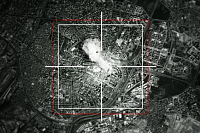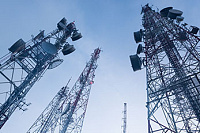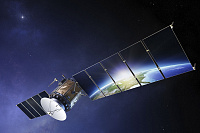Precise timekeeping is fundamental to effective telecommunications network operation.
It is more important than ever in 5G and will be even more so in future mobile networks, with new radio technologies and network architectures arising to support increasingly demanding use cases, such as time-sensitive networking for automated vehicles or controlling robots in smart factories.
[The standardization arm of the International Telecommunication Union includes a working group on network synchronization and time distribution performance (Q13/15)].
The group’s Rapporteur and Associate Rapporteur spoke to ITU News about how ITU standardization work meets evolving synchronization demands.
“Both radio access networks (RANs) and transport networks require synchronization, often in combination, and always aiming for a good balance of timing accuracy, availability, and cost,” highlights Stefano Ruffini from Calnex Solutions, Q13/15 Rapporteur.
The distribution of synchronization to radio access nodes can be addressed locally, with locally deployed Global Navigation Satellite System (GNSS) receivers, the distribution of synchronization over the radio interface, or both.
Synchronization can also be supported, alternatively or additionally, by distributing synchronization over transport networks, the core optical networks that underpin global communications.
Timekeeping standards and profiles
Transport-based solutions rely on two key technologies: the Precision Time Protocol (PTP) for time synchronization over the packet layer, as specified by IEEE Standard 1588 from the Institute of Electrical and Electronics Engineers (IEEE); and Synchronous Ethernet, providing frequency synchronization over the physical layer in line with the ITU standards G.8261, G.8262 and G.8262.1.
“Telecom profiles” show which PTP configuration options are best suited to telecom-related applications.
Q13/15 has specified, and periodically enhances, three PTP telecom profiles:
- G.8275.1 – providing full timing support based on time-synchronization distribution in networks where every element is PTP compatible.
- G.8275.2 – supporting time-synchronization distribution with partial timing support from the network.
- G.8265.1 – also providing partial timing support, based on frequency distribution in networks where not all equipment is PTP compatible.
“G.8275.2 is used in cases where you don’t have IEEE 1588 and Synchronous Ethernet in every node of the network,” explains Silvana Rodrigues from Huawei, Q13/15 Associate Rapporteur. “This profile is more used in North America, where you have GNSS receivers in base stations and need Precision Time Protocol as a backup for the base station when GNSS is lost.”
The standards continue evolving to meet the latest industry requirements and support new applications, such as 5G applications for industrial automation, notes Ruffini.
These standards – along with others for clocks and related performance requirements – are enabling a more robust and interoperable deployment of frequency and time synchronization solutions, making them crucial in maximizing the benefits of 5G and future networks,” he says.
Keeping global time coherent
Frequency synchronization was once sufficient for all equipment to operate at the same speed.
Today, time synchronization is also key,” especially to support mobile networks operating with Time Division Duplex and emerging applications for industrial automation,” says Ruffini. “This is a really fundamental requirement in today’s networks, and it is expected to become even more important in the future.”
ITU standards have addressed the key aspects of 5G fronthaul, optical networks supporting cloud RANs.
“Now we are focused on analysing the performance impacts of temporary losses of physical-layer frequency synchronization, with a view to updating the time synchronization clock specification ITU G.8273.2,” says Rodrigues.
Q13/15 is also developing data sets for the management of frequency synchronization networks based on the physical layer, such as synchronous Ethernet, which will result in updates to the synchronization-layer functions provided by ITU G.781.
“Future work will deliver a new ITU G.8272.2 to protect networks against very long periods of GNSS loss,” says Rodrigues.
Such protection can be achieved by enhancing the resiliency of time synchronization networks, in part by interconnecting multiple master clocks to maintain accurate time synchronization in the form of a coherent network primary reference time clock.
Watch the complete interview with Stefano Ruffini and Silvana Rodrigues here:



































































